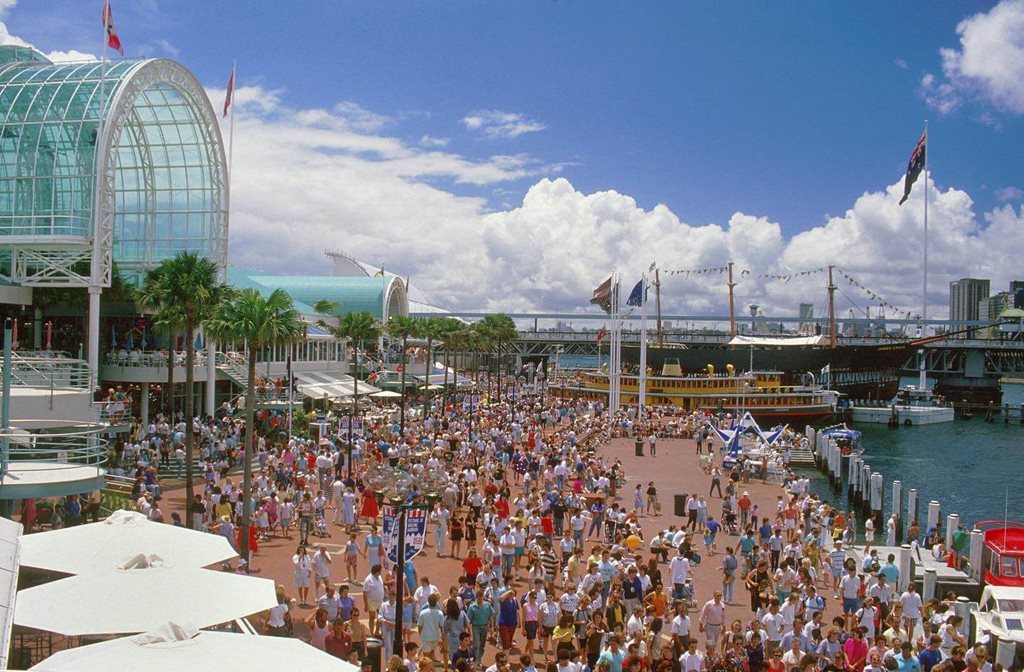Darling Harbour Turns 35!

35 years ago on May 4th Queen Elizabeth and Prince Phillip arrived at Darling Harbour on the Royal Yacht Britannia, welcomed by a crowd of 10,000 people. They were here to open the newly redeveloped harbour to the public.

A royal welcome
The royal couple officially opened the precinct at Tumbalong Park, with over 100,000 people visiting Darling Harbour over the next two months.
Fast forward to today - millions of locals and tourists from all over the world have visited the harbour and it has become one of Sydney’s best loved areas. So, to celebrate 35 incredible years of Darling Harbour, we’re looking back at 7,000+ years of the precinct’s intriguing history.

7,000 years earlier
Long before colonists arrived in Australia, Darling Harbour was occupied by the Wangal and Gadigal clans of the Eora people.
Back then the area was a fishing hotspot, teaming with fish, oysters and cockles which were vital food sources for First Nations people. The people would venture out in handmade canoes, braving high surf to gather their catch one by one.

The arrival of the first fleet
The first colonist fleet arrived in 1788 and devastated the local Aboriginal population, but the Eora people survived. They continued to live much as they always had until the 1840s and the descendants of those original clans still call Sydney home today.
Darling Harbour was first named Long Cove, until colonists renamed it Cockle Bay after the shells piled high on the shore. Finally in 1826 Governor Ralph Darling decided he had a better idea and gave the area his name.

A fascinating maritime history
Darling Harbour may be a hotspot for dining, drinking, events and luxury hotels today, but centuries ago it was a hub for shipping and manufacturing. It was here that the first steam engine in Australia started work in 1815 and right here where the world’s first freezing works opened.
In the late 1800s a full iron wharf was built where Tumbalong Park is today, which was at the time the largest steel structure in the world (until construction of the Eiffel Tower years later). The Pyrmont Bridge built in 1902 still stands as the oldest electrically-powered swing span bridge still operating in the world.
Rail yards exploded in Darling Harbour during this time and eventually came to handle most of the country’s export produce.

The Harbour’s redevelopment
The harbour continued to operate as a shipping and warehousing hub throughout the Great Depression and both world wars until 1984 when the last goods train departed. That year the Premier of NSW announced his decision to redevelop Darling Harbour and return it to the people over the next four years.
When Queen Elizabeth arrived the harbour was home to Sydney Aquarium and a number of restaurants, shops, bars, hotels and museums. Years later both King Street Wharf and Cockle Bay Wharf were constructed and Darling Harbour hosted five sports events during the 2000 Olympics.
In 2022 Darling Harbour welcomed 1.1 million visitors, with tourists and locals flocking here to dine, be entertained and enjoy Sydney’s best harbour views.